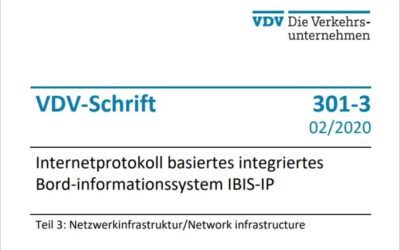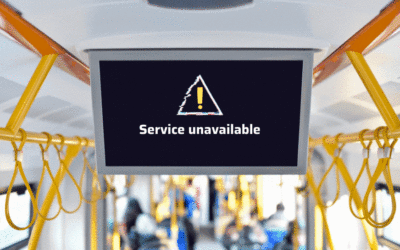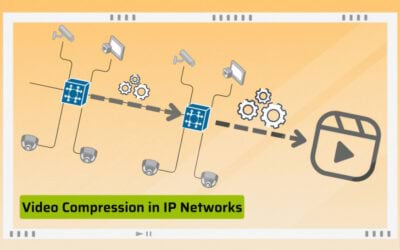Ethernet Switches for Trams – What They Must Be Able to Do
When choosing the right Ethernet switch for use in trams/streetcars, the first step is to define the exact requirements. What must the switch be able to do in your specific case so that it provides you with optimum benefits?
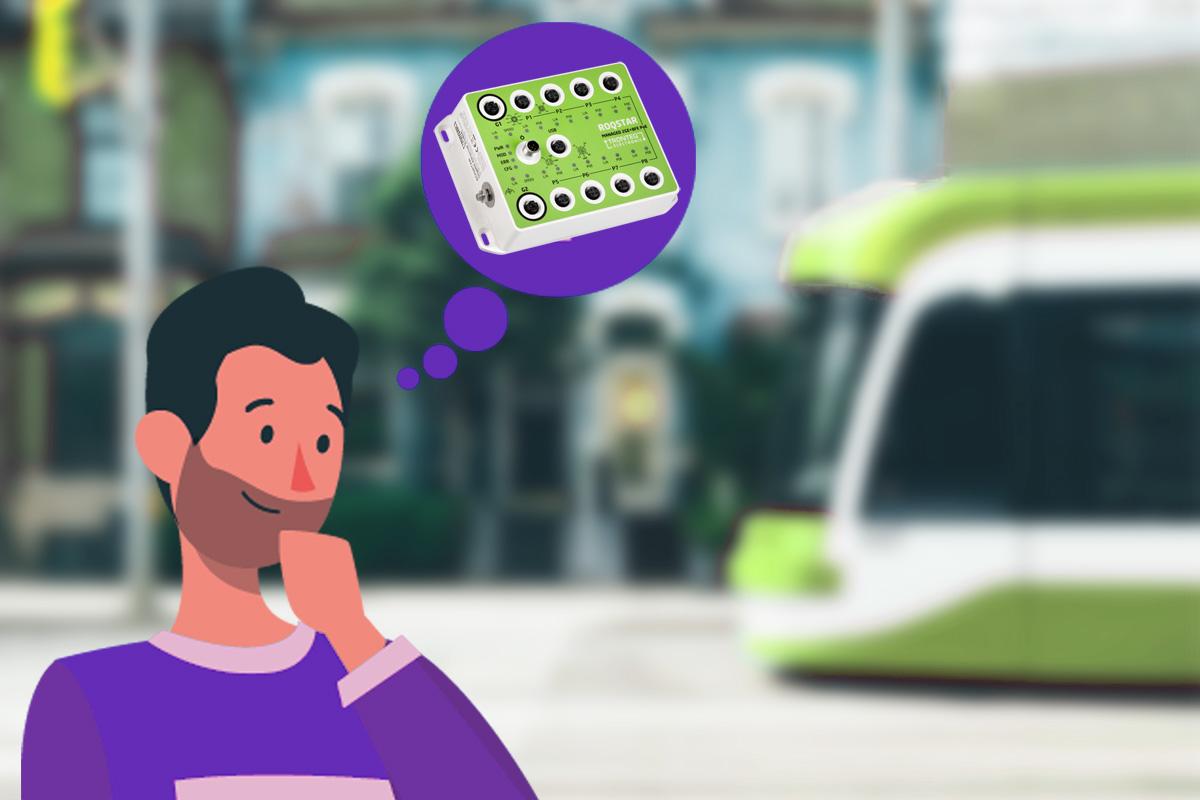
Content
This is how requirements for Ethernet switches for streetcars arise
Offering passengers a pleasant ride is the primary goal of any transport company. This includes a high quality of service, which in modern public transport vehicles is largely determined by the technology. Passenger counting systems are crucial for optimum vehicle utilization. Surveillance cameras help to ensure greater safety and order on the streetcar. These and many other devices can be located on board the vehicle. They use a network that is provided and controlled by switches. So the network requirements determine what an Ethernet switch must be able to do for use in light rail vehicles (LRVs).
How large are fleet and trams?
For smaller public transport operators (PTOs), simpler switches may be sufficient to provide good service to passengers. To connect the passenger counting system, the validators and the board computer, the switch does not need to be able to do much except be of high quality, durable, easy to use, compact and as inexpensive as possible.
Operators of streetcars, however, have much higher demands on switches. The vehicles are large and feature complex digital systems, which are generally intended to serve an above-average number of passengers. The demands on the Ethernet switches used are correspondingly high – both in terms of their functionalities and their port density.
For which applications shall the switch be used?
Depending on which and how many applications a switch is to be used for, the following technical characteristics are particularly important:
- Number of ports: each onboard device requires its own port to which it is connected. This also determines the number of ports that each switch should have in the network.
- Port-based distribution of IP addresses (DHCP): This means that each network subscriber is assigned its unique IP address and can communicate with other components in the network.
- Power over Ethernet (PoE): Some onboard devices require Power over Ethernet. To ensure this, the switch should have sufficient PoE ports.
- Separation of communication channels (VLAN): Particularly in shared networks, the need to separate the communication channels of the individual devices may arise for security and data protection reasons, for example.
- Failure safety: Demanding networks, such as those found in streetcars and commuter trains, require additional safeguards against errors and failures. Switches with integrated bypass relays guarantee an uninterrupted flow of information by immediately rerouting data in the event of one or more failures. This is particularly important for ring topologies, which are inherently more complex and therefore require extra security.
- On-board voltage: The common voltage of 24 Vdc may differ for some streetcars. For example, some rail vehicles have a voltage of 36 Vdc. Ethernet switches designed for use in suburban and subway trains or streetcars can also withstand a higher voltage.
What is the level of digitization in your organization?
Digital devices in streetcars or streetcars require the use of suitable switches. The more digitized a vehicle, the more demanding its IP network and, accordingly, the Ethernet switches. Think also of digitalization projects that could arise within the next few years.
What is the topology of the IP network?
Rail vehicles used in public transport usually have more complex onboard networks, which are often designed as a ring topology. These have one advantage: If a fault occurs on one device, data communication simply runs in the other direction. Due to their complexity, ring topologies are implemented with the help of managed switches that have intelligent management features (spanning tree) and thus ensure the smooth functioning of the network even in the event of a fault.
Does the switch have the necessary approvals?
Just like other components and devices installed in public transport vehicles, Ethernet switches are also subject to special regulations for rail vehicles: EN 50155 describes the electrical as well as the environmental conditions for operation; EN 50121 the requirements regarding electromagnetic compatibility (EMC); EN 45545 the fire protection requirements. A declaration of conformity by the manufacturer and a technical test report from an accredited laboratory certify compliance with these standards.
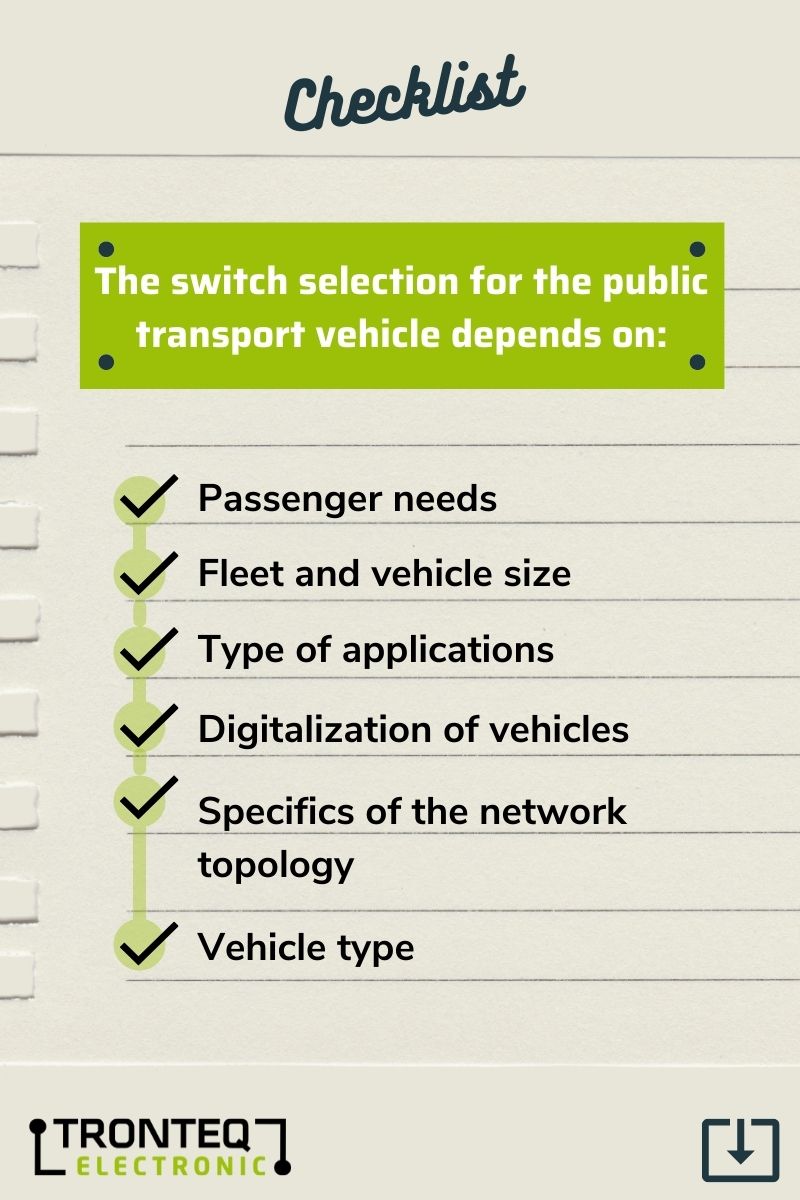
More Stories Like This:
What Role Does the Network Play for the IBIS-IP / VDV 301 Standard?
Digitalization in the transportation sector requires the transfer of ever-increasing amounts of data, pushing the existing serial communication to its limits. As an IP-based data transmission solution, IBIS-IP provides an efficient alternative.The...
Preventing System Failures in Public Transport Vehicles: Role of Ethernet Switches
In digitalized buses and trains, data is of enormous importance for both transport operators and passengers. Therefore, system failures in public transportation require special attention. Network switches act as unsung heroes here, preventing or...
IP Cameras and Network Topology Design: Optimizing Compression for Efficient Data Handling
IP cameras are widely used in public transport vehicles, enhancing onboard safety and security. ROQSTAR Ethernet switches seamlessly integrate with these cameras, ensuring optimal functionality and data transmission. However, IP cameras contribute...



